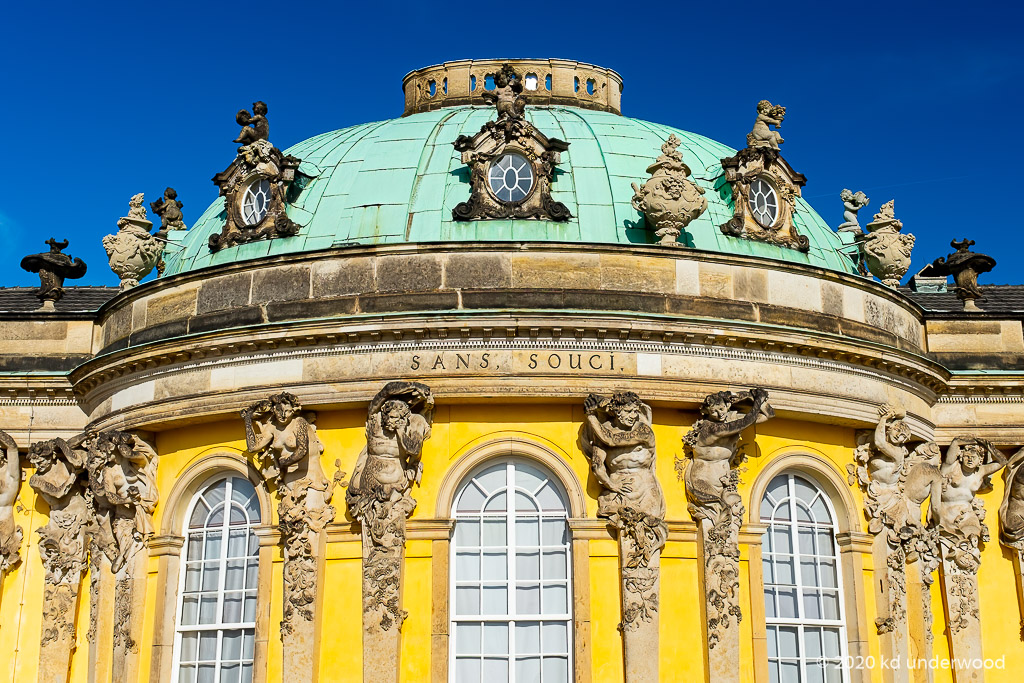
When last visiting Berlin, we took the train out of the city to Sans Souci Park in Potsdam, former residence of Prussian kings and their royal families until World War I. The Park embodies a balance of architecture and landscape, intended as a picturesque, pastoral dream emphasizing one’s relationship with nature and reason.
Sans Souci Palace was completed in 1747 as King Frederick’s summer palace. Sans Souci, interpreted from French to mean “carefree” allowed the imperial family to get away from Berlin during the summer months to relax and enjoy the beautiful natural surroundings. Designed in Rococo style it is influenced by French 17th century architecture as realized in Louis XIV’s Versailles outside of Paris. Single story with ten-principal rooms its ornate interior design reflects Frederick’s personal taste and interests.
Orangerie Palace built in the style of Italian Renaissance recalls both the Villa Medici in Rome and the Uffizi in Florence. Completed in 1864 for King Friedrich Wilhelm IV of Prussia it is fronted by Paradise Garden containing many exotic flowers and foliage with Norse and Sicilian Gardens to the east. The twin towers contain the royal residence with halls on both sides for visiting guests.
New Palace built in 1769 in Prussian Baroque was used by King Friedrich II for royal functions, balls and state occasions. It is an excess of splendor in marble, native stone, and gilt. Room after room unfolds in overwhelming spectacle of beauty and opulence with paintings, sculpture, chandeliers, and unique marquetry flooring. With over 200 rooms, four ballrooms and a theatre it is an overwhelming palace. The Communs, which would be amazing by itself anywhere in the world, housed the royal kitchens, palace guards, gardeners, and servants. Today it is part of the University of Potsdam.
The above is just a sampling of what there is to visit in this remarkable park. We spent the entire day here and feel like we could easily go back and do it all again. Unlike Germany’s other castles and residences photography is allowed with a fee, allowing me to capture these images. As Germany’s largest World Heritage Site, it is a must see when visiting Berlin.
All images were taken with Fuji X100s with 23mm f2.0 lens in RAW format, processed in Lightroom Classic 11.0.1 and Topaz DeNoise AI